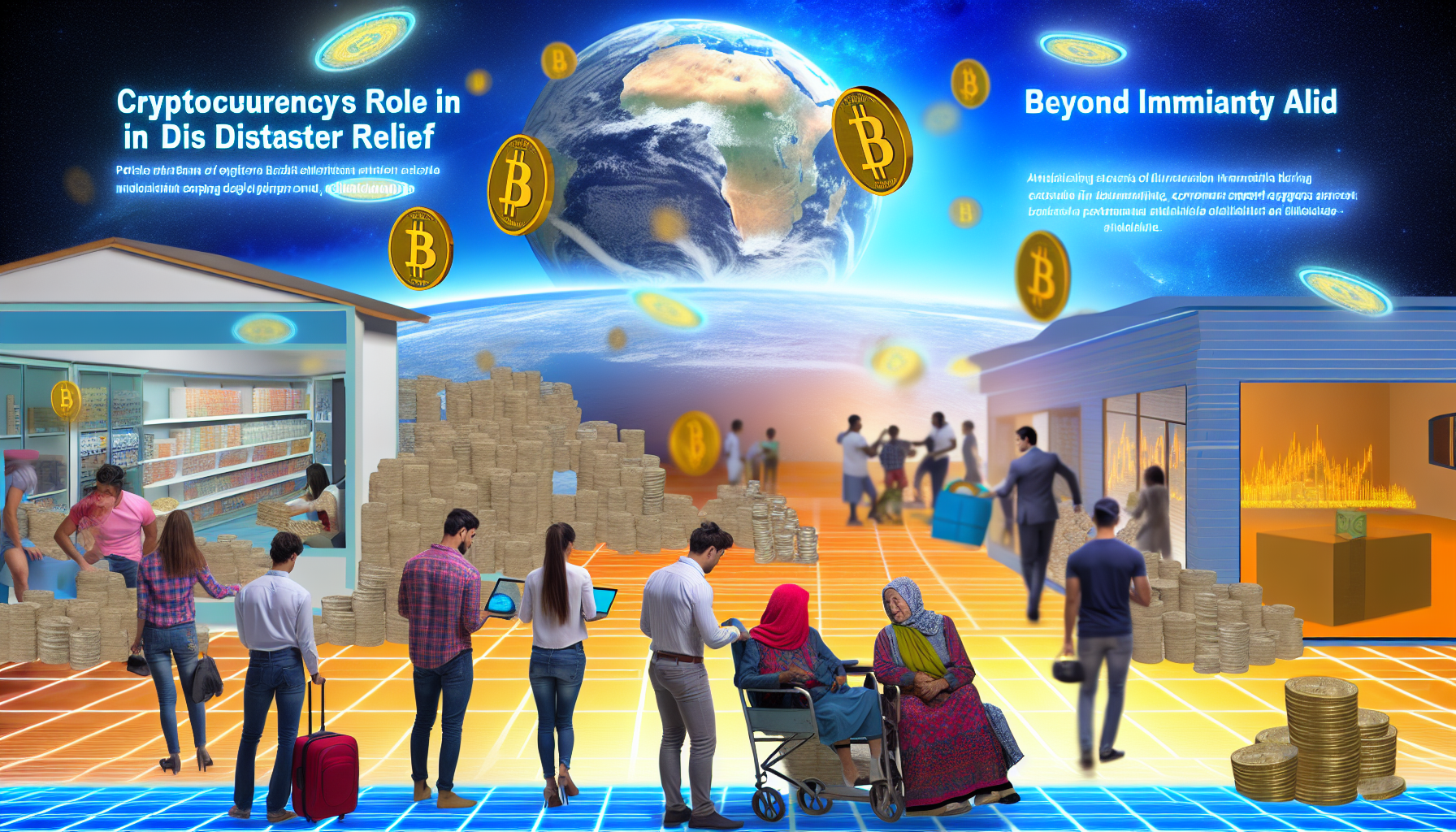The world watches in horror as news breaks of another natural disaster: homes destroyed, communities displaced, and urgent cries for help. In the traditional world, the response would be a slow mobilization of aid, international wire transfers, and an invetiable delay in relief reaching those affected. But in our crypto-fueled society, the narrative is distinctly different. Cryptocurrency has not only streamlined immediate aid but has also carved a niche in long-term disaster recovery efforts, forever changing how we support our fellow humans in times of crisis.
In the immediate aftermath of a disaster, speed is of the essence. Cryptocurrencies, with their ability to cross borders and time zones without the need for banking intermediaries, have revolutionized the pace at which aid can be delivered. With a simple QR scan or wallet address, funds can be transferred directly to those in need or to trusted on-the-ground organizations, ensuring that much-needed resources are distributed swiftly and efficiently.
However, the true potential of cryptocurrency in disaster relief unfolds in the long-term rehabilitation phase—a subject less explored but equally crucial. Post-disaster rebuilding involves infrastructure reconstruction, community resettlement, and psychological support, all of which require not just funds but a sustainable stream of resources. Crypto donations are not just a one-off transaction but can be designed as ongoing support systems. Through smart contracts, donors can set conditions for fund disbursement tied to milestones in the rebuilding efforts, ensuring accountability and progress.
Another innovative crypto avenue for disaster relief is the creation of decentralized autonomous organizations (DAOs). These entities thrive on blockchain’s transparency and the collective management model. A DAO dedicated to disaster relief empowers the affected community by giving them a say in relief efforts and fund allocation. A notable example was the creation of the ‘RebuildDAO’, which aggregated global contributions and channelled them into rebuilding efforts, with decisions made democratically by affected community members themselves.
Not to forget, crypto’s intrinsic transparency also allows donors to track their contributions. Utilizing blockchain’s immutable ledger, donors can observe the journey of their generosity from wallet to real-world impact. This visibility encourages continuous support by fostering trust and creating a loopback effect where successful recovery stories motivate further contributions.
The tokenization of assets is another radical change. Consider a situation where a community’s infrastructure is destroyed. A DAO could issue tokens representing investment in rebuilding efforts, transforming donors into stakeholders. Such initiatives not only raise funds but also create a vested interest in the community’s long-term success—an involvement that goes beyond the initial humanitarian impulse.
We’ve also observed the emergence of ecosystem restoration projects funded exclusively through cryptocurrencies. Projects like ‘CryptoSeeds for Restoration’ see people invest in tokens equating to the planting of trees or cleaning of waterways, with the outcome verifiable via satellite imagery linked back to the blockchain.
The intersection of cryptocurrency and disaster relief fuels innovative solutions that defy geographical, political, and financial barriers. While the digitization of philanthropy has transformed the immediacy and mode of contributions, the sustaining impact of such currency in long-term disaster mitigation highlights an evolving paradigm in societal resilience and recovery, one that builds upon the gamification of giving and enhances the integrity and effectivity of our collective compassion.
Yet, as with any innovation, challenges persist. Ensuring that the benefits of this digital shift in disaster relief do not bypass those who are technologically underprivileged is crucial. Furthermore, as we continually adapt to this brave new world of blockchain-enabled benevolence, we must vigilantly assess its efficacy and look for ways to improve and optimize these pioneering tools for compassionate action.
